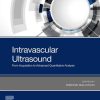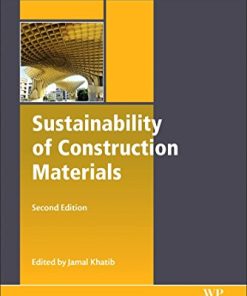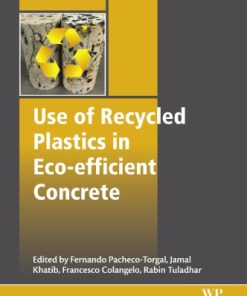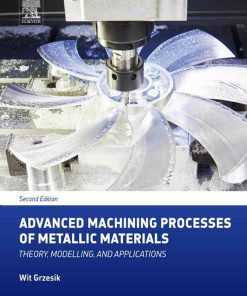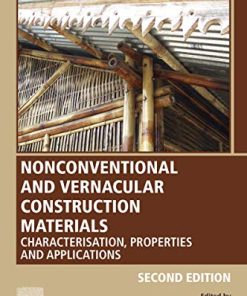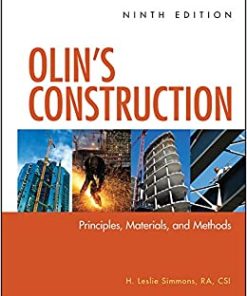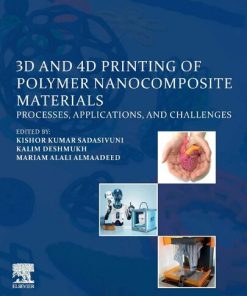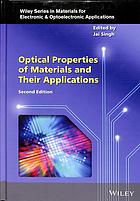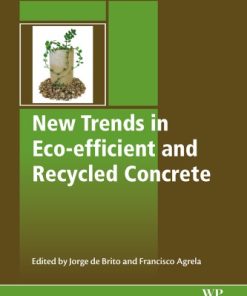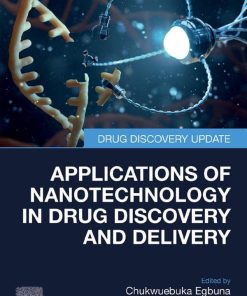(Ebook PDF) Nanotechnology in eco efficient construction materials processes and applications 2nd Edition by Fernando Pacheco Torgal, Maria Vittoria Diamanti, Ali Nazari, Claes Goran-Granqvist, Alina Pruna, Serji Amirkhanian 0081026420 9780081026427 full chapters
$50.00 Original price was: $50.00.$25.00Current price is: $25.00.
Nanotechnology in eco-efficient construction: materials, processes and applications 2nd Edition by Fernando Pacheco-Torgal, Maria Vittoria Diamanti, Ali Nazari, Claes Goran-Granqvist, Alina Pruna, Serji Amirkhanian – Ebook PDF Instant Download/DeliveryISBN: 0081026420, 9780081026427
Full download Nanotechnology in eco-efficient construction: materials, processes and applications 2nd Edition after payment.
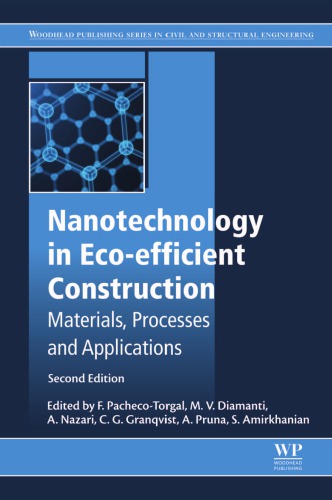
Product details:
ISBN-10 : 0081026420
ISBN-13 : 9780081026427
Author: Fernando Pacheco-Torgal, Maria Vittoria Diamanti, Ali Nazari, Claes Goran-Granqvist, Alina Pruna, Serji Amirkhanian
Covering the latest technologies, Nanotechnology in eco-efficient construction provides an authoritative guide to the role of nanotechnology in the development of eco-efficient construction materials and sustainable construction. The book contains a special focus on applications concerning concrete and cement, as nanotechnology is driving significant development in concrete technologies. The new edition has 14 new chapters, including 3 new parts: Mortars and concrete related applications; Applications for pavements and other structural materials; and Toxicity, safety handling and environmental impacts.
Nanotechnology in eco-efficient construction: materials, processes and applications 2nd Table of contents:
1 – Introduction to nanotechnology in eco-efficient construction
1.1 Recent nanotechnology advancements and limitations
1.2 Nanotech-based materials for eco-efficient construction
1.3 Outline of the Book
References
One – Mortars and concrete related applications
2 – Influence of nanoparticles on the strength of ultra-high performance concrete
2.1 Introduction
2.2 Types of nanomaterials in cement-based composites
2.3 Role of nanoparticles in ultra-high performance concrete (UHPC)
2.4 UHPC curing regimes
2.4.1 Curing in water
2.4.2 Steam-curing regime
2.4.3 Autoclaving
2.5 Strength of UHPC
2.5.1 Compressive strength
2.5.2 Flexural strength
2.5.3 Tensile splitting strength
2.6 Production problems and recommendations for practical application
Acknowledgments
References
3 – The effect of nanoparticles on the self-healing capacity of high performance concrete
3.1 Introduction
3.2 Self-healing systems based on nanoparticles used in cementitious materials
3.2.1 Nonencapsulated self-healing systems
3.2.2 Encapsulated self-healing systems
3.3 Influence of self-healing systems in the characteristics of HPC
3.3.1 Modifications in the microstructural properties
3.3.2 Modifications in the physico-mechanical performance
3.3.3 Modifications in the self-healing capacity
3.4 Durability of self-healing HPC under aggressive environments
3.5 Future trends
References
4 – The impact of graphene oxide on cementitious composites
4.1 Introduction
4.2 Graphene materials
4.3 Graphene oxide
4.3.1 GO synthesis
4.3.2 Structure of GO
4.3.3 Hygroscopic nature of GO
4.4 Effects of GO incorporation into cementitious composites
4.4.1 Effects on mechanical properties
4.4.2 The influence of GO on durability
4.5 Some structural applications of GO/cement composites in repairing of reinforced concrete
4.6 Summary of the chapter
Acknowledgment
References
5 – Application of nanomaterials in alkali-activated materials
5.1 Introduction
5.2 Nanotechnology in alkali-activated materials
5.3 Effects of nanosilica on alkali-activated materials
5.4 Effect of nanoclay on alkali-activated materials
5.5 Effect of nano-TiO2 on alkali-activated materials
5.6 Effects of carbon nanotube on alkali-activated materials
5.7 Conclusions and recommendations
References
6 – Effects of nanofibers on properties of geopolymer composites
6.1 Introduction
6.2 Design of experiments approach
6.2.1 Main effects
6.2.2 Interaction effects
6.3 Experimental
6.3.1 Materials of the investigation
6.3.2 Sample preparation technique
6.3.2.1 Mixing of nanomaterials
6.3.2.2 Processing and curing of nanoreinforced sample
6.3.3 Factorial design
6.3.3.1 Fractional design
6.3.4 Test matrix
6.3.5 Fracture toughness measurement technique
6.4 Results and discussions
6.4.1 Effect of nanofillers on KIC of the MEYEB geopolymer
6.4.2 Statistical analysis of KIC data
6.5 Summary
References
7 – Nanoindentation for evaluation of properties of cement hydration products
7.1 Introduction
7.2 Cement hydration
7.3 Hydration mechanism in cement–fly ash system
7.4 Nanoindentation technique
7.4.1 What is nanoindentation?
7.4.2 Determination of material properties
7.4.3 Unique advantages, assumptions, and limitations
7.4.4 Nanoindentation for cementitious materials
7.4.5 Factors influencing the results of nanoindentation
7.5 Properties of cement hydration products—experimental investigations
7.6 Results and discussion
7.6.1 Cement paste (CP) specimens
7.6.1.1 Cement paste with fly ash (CPFA) specimens
7.6.1.2 Way forward
Acknowledgments
References
Two – Applications for pavements and other infrastructure materials
8 – Performance of asphalt mixture with nanoparticles
8.1 Introduction
8.2 Types of nanoparticles modified asphalt mixture
8.2.1 Nanoclay modified asphalt
8.2.2 Nanosilica modified asphalt cement
8.2.3 Carbon nanotubes modified asphalt cement
8.3 Laboratory techniques for preparation of nanoparticles modified asphalt mixtures
8.4 Materials and experimental design
8.4.1 Materials
8.4.2 Modified asphalt binders preparation
8.4.3 The design of aggregates
8.4.4 Determination of volumetric properties of asphalt mixtures
8.5 Advantages and disadvantages of nanoparticles in the modification of asphalt mixtures
8.6 Characteristic and performance evaluation of nanoparticles modified asphalt mixtures
8.6.1 Influence of nanoparticles on resilient modulus of asphalt mixtures
8.6.2 Effect of nanoparticles on dynamic creep
8.6.3 Impact of nanoparticles on the rutting distress
8.6.4 Influence of nanoparticles on moisture susceptibility
8.7 Durability of modified asphalt mixtures
8.8 Challenges of nanoparticles modification
8.9 Conclusion
Acknowledgments
References
9 – Nanomodified asphalt mixture with enhanced performance
9.1 Introduction and background
9.2 Classification of nanomaterials applied for asphalt binder modification
9.2.1 Application of nanomineral materials on asphalt mixture modification
9.2.2 Application of carbon nanotubes and exfoliated graphite nanoplatelets (xGNP) on asphalt mixtur
9.2.3 Examination on mixture uniformity
9.3 Enhanced performance of the nanomodified asphalt mixture
9.3.1 Property enhancement with the nanomineral materials modification
9.3.1.1 Enhancement on mechanical properties of asphalt binder due to nanomineral modification
9.3.1.2 Improvement on the fire reactions for the asphalt mixture
9.3.2 Property enhanced with the nanocarbon materials modified asphalt mixture
9.3.2.1 Change on mechanical properties of asphalt binder due to nanocarbon modification
9.3.2.2 Modification on the electrical, thermal, and optical performance of the nanomodified asphalt
9.3.3 Bonding strength examination between the mineral aggregate and nanomaterials modified asphalt
9.4 Conclusions and current achievement and knowledge gaps on the application of nanomodified asphal
9.4.1 Summarization on the application of nanomaterials in asphalt mixture
9.4.2 Current knowledge gap on the study of nanomaterial modified asphalt mixture
References
10 – Effects of graphene oxide on asphalt binders
10.1 Introduction
10.2 Materials and experiments
10.2.1 Materials
10.2.1.1 Asphalt binders
10.2.1.2 Graphene oxide
10.2.2 Characterization of GO
10.2.2.1 Fourier transform infrared spectroscopy test
10.2.2.2 X-ray diffraction test
10.2.2.3 Thermogravimetric test
10.2.3 Preparation of GO MA
10.2.4 Asphalt properties tests
10.2.4.1 Separation test of GO MA
10.2.4.2 Gas chromatography–mass spectrometry test
10.2.4.3 Physical properties tests
10.2.4.4 Dynamic shear rheometer test
10.2.4.5 Bending beams rheometer test
10.3 Results and discussions
10.3.1 Interaction between GO and asphalt
10.3.1.1 Preparation process
10.3.1.2 Gas chromatography–mass spectrometry (GC–MS) analysis
10.3.1.3 FTIR analysis of GO MA
10.3.1.4 XRD analysis of GO MA
10.3.2 GO effect on asphalt properties
10.3.2.1 Storage stability
10.3.2.2 Physical properties
10.3.2.3 Rheological properties
10.3.2.3.1 High temperature sweep
10.3.2.3.2 Low temperature sweep
10.3.2.4 BBR test
10.3.2.5 Thermal properties
10.4 Aging characteristics of modified binders
10.5 Conclusions
References
11 – NanoComposites for structural health monitoring
11.1 Introduction
11.2 Types of nanocomposites for structural health monitoring
11.2.1 Nanocementitious composites
11.2.2 Nanopolymer composites
11.3 Fabrication and signal measurement of nanocomposites
11.3.1 Dispersion of nanofillers and mix design
11.3.2 Measurement sensing signals of nanocomposites
11.4 Sensing properties of nanocomposites
11.4.1 Sensing properties of nanocementitious composites under loadings
11.4.2 Sensing properties of nanopolymer composites under loadings
11.5 Sensing mechanisms of nanocomposites
11.6 Application in structural health monitoring
11.6.1 Monitoring for structural parameters
11.6.2 Monitoring for traffic parameters
11.7 Conclusions and future trends
References
Further reading
12 – Concrete with nanomaterials and fibers for self-monitoring of strain and cracking subjected to
12.1 Introduction
12.2 Experimental investigations
12.2.1 Materials and mixture design
12.2.2 Samples and set-up description
12.2.3 Test methods
12.3 Influence of conductive admixtures on the mechanical and electrical properties of concrete beam
12.3.1 Influence of conductive admixtures on the workability
12.3.2 Influence of conductive admixtures on the compression and flexural behavior
12.3.2.1 Effect of conductive materials on the compressive and flexural strength
12.3.2.2 Effects of conductive materials on the flexural toughness
12.3.3 Influence of conductive admixtures on the relationship between strain and FCR (self-monitorin
12.3.4 Influence of conductive admixtures on the relationship between FCR and flexural load-bearing
12.3.5 Influence of conductive admixtures on the relationship between FCR and crack opening displace
12.4 Conclusion
References
13 – Icephobic nanocoatings for infrastructure protection
13.1 Introduction
13.2 Ice protection strategies
13.3 Types of infrastructure applications for ice protection
13.4 Basics of icephobic nanocoatings
13.5 Nanocoatings with organic fillers
13.6 Nanocoatings with inorganic fillers
13.6.1 Silica-based
13.6.2 Carbon-based
13.6.3 Metallic and metallic oxide-based
13.7 Hybrid nanocoatings
13.8 Functionalized nanomaterials
13.9 Analysis
13.10 Future trends
13.11 Conclusion
13.12 Sources of further information and advice
References
14 – Self-healing nanocoatings for protection against steel corrosion
14.1 Introduction
14.2 Corrosion and nanocoatings: ways of protection
14.3 Compendium of nanocoatings
14.3.1 Inorganic nanocoatings
14.3.2 Organic nanocoatings
14.3.3 Manufacturing methods
14.4 Advanced nanocoatings: introduction of self-healing properties
14.4.1 Polymeric coatings
14.4.2 Silane coatings
14.5 Implementation of nanocoatings
14.5.1 Patents review
14.5.2 Commercial applications summary
14.6 Future trends
References
15 – Nanocoatings for protection against steel corrosion
15.1 Introduction
15.2 Nanofillers for anticorrosion coatings
15.3 Metallic nanofillers
15.4 Metal oxide nanofillers
15.5 Polymeric nanofillers
15.6 Carbon-based nanofillers
15.6.1 Carbon nanotubes
15.6.2 Nanodiamonds
15.6.3 Graphene-based nanomaterials
15.7 Conclusions and future perspectives
Acknowledgments
References
16 – Fire retardant nanocoating for wood protection
16.1 Introduction
16.2 Requirements for fire safety of wooden building structures
16.3 Types of fire retardant treatment of wooden structures
16.3.1 Intumescent coatings
16.3.2 Fire retardant impregnations
16.4 Nanotechnologies for fire protection of wood
16.4.1 Layered aluminosilicates (nanoclays)
16.4.2 Nanooxides and inorganic flame retardants
16.4.3 Nanosilica sol and silicon compounds
16.4.4 Nanostructured carbon materials
16.5 Mechanisms of fire-protective action of nanocompounds
16.5.1 Chemical interactions
16.5.2 Physical factors
16.5.3 Barrier and shielding effects
16.6 Increasing of the durability and biological stability of wood
16.7 Perspectives and recommendations
References
Three – Applications for building energy efficiency
17 – Aerogel-enhanced insulation for building applications
17.1 Introduction
17.2 Aerogel synthesis and market
17.2.1 Aerogel synthesis
17.2.2 Aerogel market
17.3 Aerogel properties
17.4 Aerogel-enhanced opaque systems
17.4.1 Aerogel-enhanced mortars and concretes
17.4.2 Aerogel-enhanced Plasters
17.4.3 Aerogel-enhanced Blankets
17.5 Conclusions
References
Further reading
18 – Nano aerogel windows and glazing units for buildings’ energy efficiency
18.1 Introduction
18.2 Advanced glazing technologies
18.2.1 Solar windows
18.2.2 Switchable or chromogenic glazing
18.2.3 Evacuated glazing
18.2.4 Insulation-filled glazing
18.3 Aerogel and its properties
18.4 Aerogel manufacturing
18.4.1 Gelation
18.4.2 Purification and aging
18.4.3 Drying
18.5 Aerogel windows and glazing units
18.5.1 Applications/Case studies
18.5.1.1 Buchwiesen School Sports Hall, Zurich
18.5.1.2 Commercial building in Hong Kong
18.5.1.3 Office building in Central London
18.5.1.4 Educational building at Worcester Polytechnic Institute, USA
18.5.1.5 School building in London
18.5.1.6 The Monetary Times building, Toronto, Canada
18.5.1.7 Office building, London, UK
18.5.2 Research progress
18.5.3 Commercial status
18.5.4 Challenges ahead
18.6 Conclusion
References
19 – Smart perovskite-based technologies for building integration: a cross-disciplinary approach
19.1 Introduction
19.2 Perovskite-based photovoltaics (PVs)
19.2.1 Device architectures and performances of semitransparent PVs
19.2.2 Highly transparent perovskite-based PVs
19.2.3 Building integration of perovskite-based solar cells: effects on energy balance and visual co
19.3 The evolution of multifunctional chromogenics
19.4 Perovskite-based photovoltachromics (PVCDs)
19.4.1 Multifunctional devices: design and figures of merit
19.4.2 Building integration of chromogenic devices
19.5 Forthcoming perspectives for multifunctional windows
References
20 – Electrochromic glazing for energy efficient buildings
20.1 Introduction
20.2 On the energy saving potential and other assets
20.3 Operating principles and materials
20.3.1 Generic device design
20.3.2 The key role of nanostructure
20.3.3 Optical properties
20.3.4 Some comments on mixed electrochromic oxides
20.4 Flexible electrochromic foils: a case study
20.5 Towards superior electrochromic glazing: some recent results
20.5.1 Improved durability and rejuvenation of electrochromic thin films by electrochemical treatmen
20.5.2 Electrolyte functionalization
20.6 Conclusions and perspectives
People also search for Nanotechnology in eco-efficient construction: materials, processes and applications 2nd:
examples of eco-efficiency
what is nanotechnology in construction
benefits of nanotechnology in environment
what is environmental nanotechnology
nanotechnology economic impact
Tags:
Nanotechnology,eco efficient,materials,processes,applications,Fernando Pacheco Torgal,Maria Vittoria Diamanti,Ali Nazari,Claes Goran-Granqvist,Alina Pruna,Serji Amirkhanian
You may also like…
Engineering
Uncategorized
Technique - Nanotechnology



